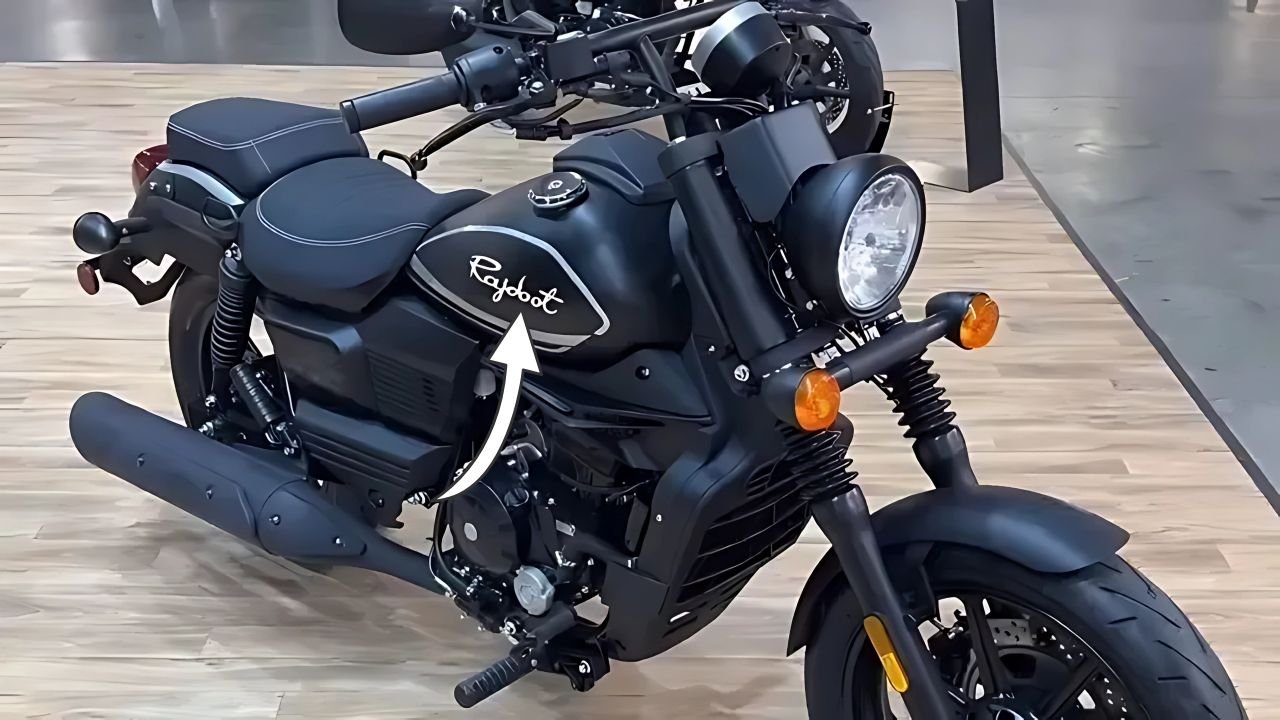In a world dominated by high-tech motorcycles and fuel-injected engines, the Rajdoot 350cc remains a beloved relic of India’s two-wheeler history. Once a status symbol and cultural phenomenon, this legendary machine—often referred to as the “Panther” by loyal enthusiasts—played a foundational role in the evolution of Indian motorcycling. While newer bikes like the Royal Enfield Bullet may have stolen the limelight, the Rajdoot 350cc continues to occupy a special place in the hearts of vintage bike lovers.
The Birth of the Rajdoot 350cc: Engineering Roots and National Ambition
The story of the Rajdoot 350cc begins in the 1960s when India was undergoing a transformation—both politically and industrially. Amid a surge in demand for locally manufactured products, the Escorts Group, better known for agricultural equipment, partnered with Jawa Motorcycles to bring two-wheelers to Indian roads.
Originally producing 250cc Jawa motorcycles, Escorts quickly realized that Indian terrains needed something more durable and powerful. By 1969, they introduced the Rajdoot 350cc, modeled on the robust Jawa Type 634 twin-cylinder motorcycle.
The name “Rajdoot,” meaning “royal messenger,” was more than a title—it was a reflection of the motorcycle’s purpose: to serve as a reliable, strong, and symbolic mode of transport for an aspirational middle class.
Design That Stood Apart: The Panther Look
What made the Rajdoot 350cc instantly recognizable was its unique design. Unlike its sleeker, more contemporary competitors, the Rajdoot featured a monocoque chassis where the fuel tank blended seamlessly with side panels. This gave it a flowing, almost feline form—earning it the nickname “Panther” among its fans.
Its rounded headlamp, elongated seat, and bulbous frame made the motorcycle stand out in a market that hadn’t yet seen such design language. Despite—or perhaps because of—its unconventional looks, the Rajdoot 350cc became a head-turner on Indian roads.
Performance and Durability: Made for India
The heart of the Rajdoot 350cc was a 343cc, twin-cylinder, two-stroke, air-cooled engine delivering about 18 horsepower. While it might seem modest today, this was more than enough for the time. It could reach speeds of up to 120 km/h, making it one of the faster motorcycles on Indian roads during the 1970s and 1980s.
The bike’s legendary two-stroke rumble and blue smoke trail weren’t just distinctive—they were a badge of honor for its riders. Its heavy-duty frame, leading-link front suspension, and low-compression engine were perfectly suited to Indian conditions, from bumpy village roads to fuel shortages in remote areas.
Tailored for Indian Riders
Every feature of the Rajdoot 350cc reflected thoughtful engineering. Raised handlebars offered a relaxed riding posture ideal for long trips. The well-padded dual seat ensured comfort for both the rider and pillion, while the high ground clearance made it monsoon-ready—ideal for flooded streets and rural paths.
Its mechanical simplicity made it easy to repair, even in the smallest towns. The bike’s ability to run on low-quality petrol and endure harsh weather made it the go-to choice for police, postal workers, and long-distance riders.
Cultural Icon of the 70s and 80s
In the 1970s and 1980s, the Rajdoot 350cc wasn’t just a motorcycle—it was a cultural icon. For many families, owning a Rajdoot was a sign of upward mobility. It became a favored choice for government departments like the police and postal services.
If you grew up during that era, chances are you saw uniformed officers or postmen zipping past on Rajdoots, becoming part of the very image of urban India.
Bollywood, too, embraced the Rajdoot. From action heroes to romantic leads, film characters rode these machines into the hearts of millions. Its appearance in movies elevated the Rajdoot 350cc to aspirational status, inspiring young men across the country to dream of the open road.
An Experience Like No Other
Ask anyone who rode the Rajdoot 350cc back in the day, and they’ll talk about its unique riding experience. The engine’s sudden power surge, typical of two-strokes, demanded skilled throttle control. The upright posture and wide handlebars made long rides easier on the back and shoulders.
Its weight, around 170 kg, provided unmatched road stability. Sure, it wasn’t the easiest to corner or maneuver in tight spaces, but the ride quality on highways and long stretches was remarkably smooth for the time.
More than anything, it was reliable. Riders often shared tales of their Rajdoot starting after years of neglect or surviving crashes with little damage. The phrase, “A Rajdoot never leaves its rider stranded,” wasn’t just folklore—it was earned through decades of rugged performance.
Maintenance as a Ritual
Riding a Rajdoot 350cc was only part of the story—owning one meant being part of a mechanical brotherhood. Mixing two-stroke oil with petrol became a personal ritual, with each owner having their own “magic ratio” for performance.
Weekend cleaning and tuning sessions brought neighbors and friends together. Discussions around carburetor settings, ignition timing, and fuel mix ratios were as social as they were technical.
Variants and Evolution
Throughout its production life—from 1969 to the early 1990s—the Rajdoot 350cc saw only modest changes. Its core configuration remained the same: a 343cc engine, 4-speed gearbox, drum brakes, and a simple 6-volt electrical system.
Some variants like the Rajdoot 350 Deluxe featured chrome details and stylish paint jobs. There was even a sidecar model popular among traders and small business owners. Toward the end, a disc brake version was introduced, though it didn’t significantly alter the bike’s basic character.
A common misconception arises with the Rajdoot RD350, launched in the 1980s. Despite sharing the “Rajdoot” branding, it was a completely different motorcycle based on Yamaha’s RD350, targeting performance enthusiasts.
The Decline of the Rajdoot 350cc
The downfall of the Rajdoot 350cc can be attributed to multiple factors. The opening of India’s economy in the 1990s brought in modern, fuel-efficient motorcycles. Two-stroke engines also faced regulatory pressure due to their high emissions.
Its weight, fuel consumption, and dated technology couldn’t compete with newer entrants from Japan and Europe. Production was eventually discontinued around 1990, although parts remained in circulation for years.
However, rather than fade away, the Rajdoot transitioned from a common commuter to a collector’s dream.
A Collector’s Classic Today
Today, a well-maintained Rajdoot 350cc is a rare and valuable asset. Restorers and vintage collectors are scouring the countryside for salvageable models. Parts are becoming increasingly rare, and restoration often involves a mix of sourcing original components and handcrafting missing pieces.
Vintage motorcycle rallies now feature entire segments dedicated to the Rajdoot. Enthusiasts bring their lovingly restored machines, complete with polished chrome, period-accurate accessories, and that unmistakable two-stroke roar.
Workshops and Restoration Culture
In cities like Delhi, Pune, and Bangalore, a niche industry has emerged around Rajdoot restorations. Expert mechanics—many of whom cut their teeth working on these bikes decades ago—now restore them using a blend of old-school methods and modern tools.
These workshops are preserving more than motorcycles—they’re keeping alive a slice of India’s mechanical heritage. Thanks to them, the Rajdoot 350cc is enjoying a renaissance, especially among younger collectors who appreciate its raw charm and vintage appeal.
Legacy and Cultural Significance
Even though the Rajdoot 350cc is no longer in production, its legacy continues to resonate. From fashion designers using its image on clothing to cafes using old models as decor pieces, the Rajdoot has transcended transportation—it’s now an icon.
In TV shows and films set in the 70s or 80s, the Rajdoot often makes a cameo, instantly transporting viewers back in time. For those who grew up with the Rajdoot, it symbolizes freedom, simplicity, and a slower, more grounded era.
Final Thoughts: More Than Just a Motorcycle
While the Rajdoot 350cc may have been overshadowed by bikes like the Bullet in later years, its contribution to India’s motorcycling landscape is undeniable. It gave middle-class families their first taste of personal mobility, served the nation’s workforce, and brought joy to generations of riders.
For many, the Rajdoot isn’t just a machine—it’s a memory, a milestone, and a museum piece rolled into one. In today’s fast-paced, tech-driven world, the Rajdoot 350cc serves as a beautiful reminder of India’s mechanical past and the enduring spirit of its riders.
Some Important Link
| Telegram Group | Click Here |
| WhatsApp Group | Click Here |
| Home Page | Click Here |










